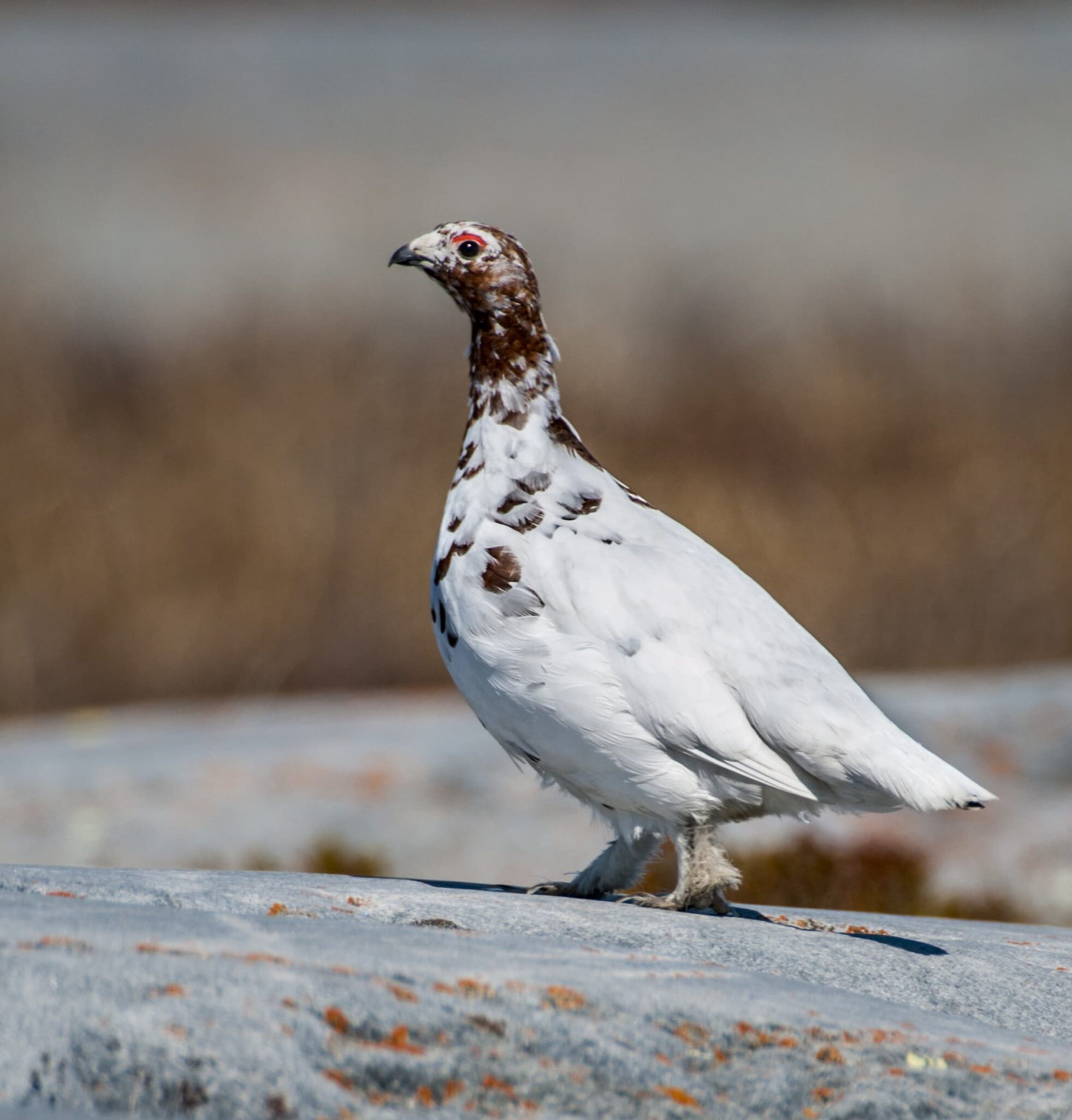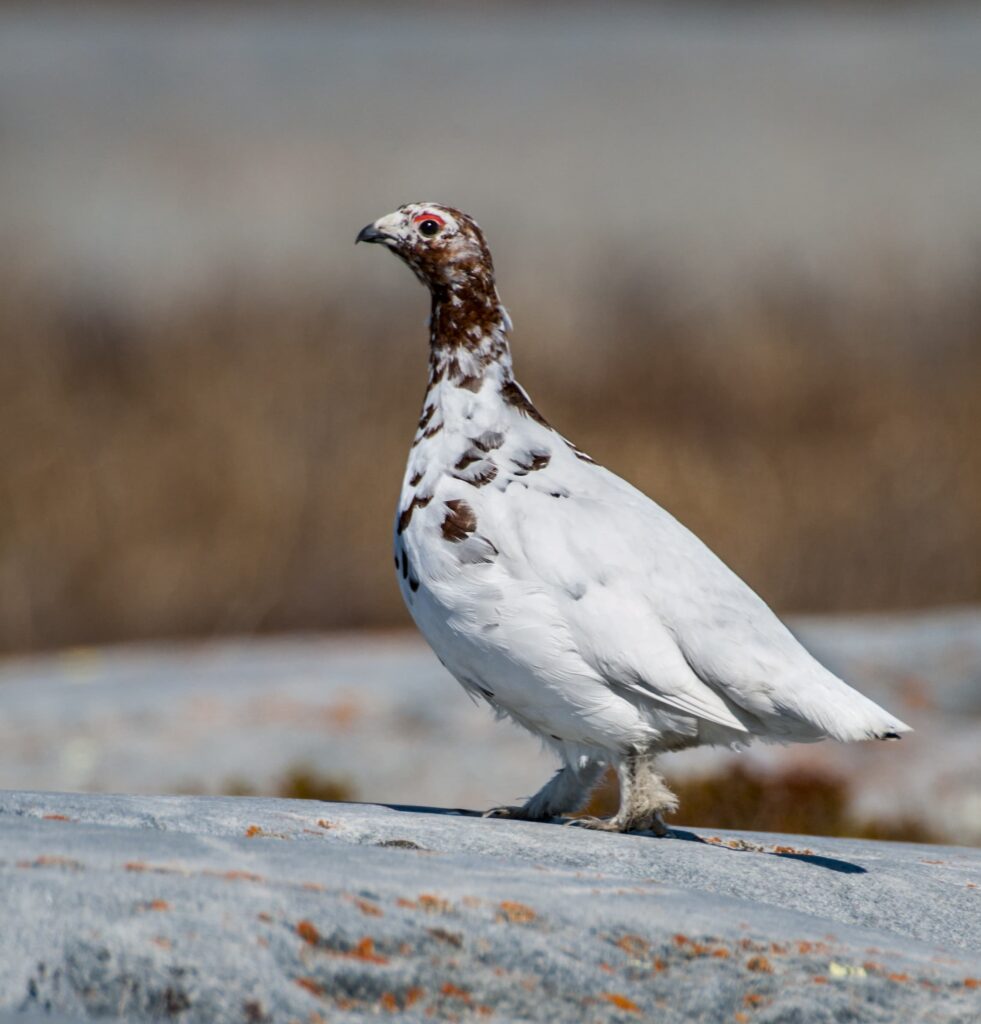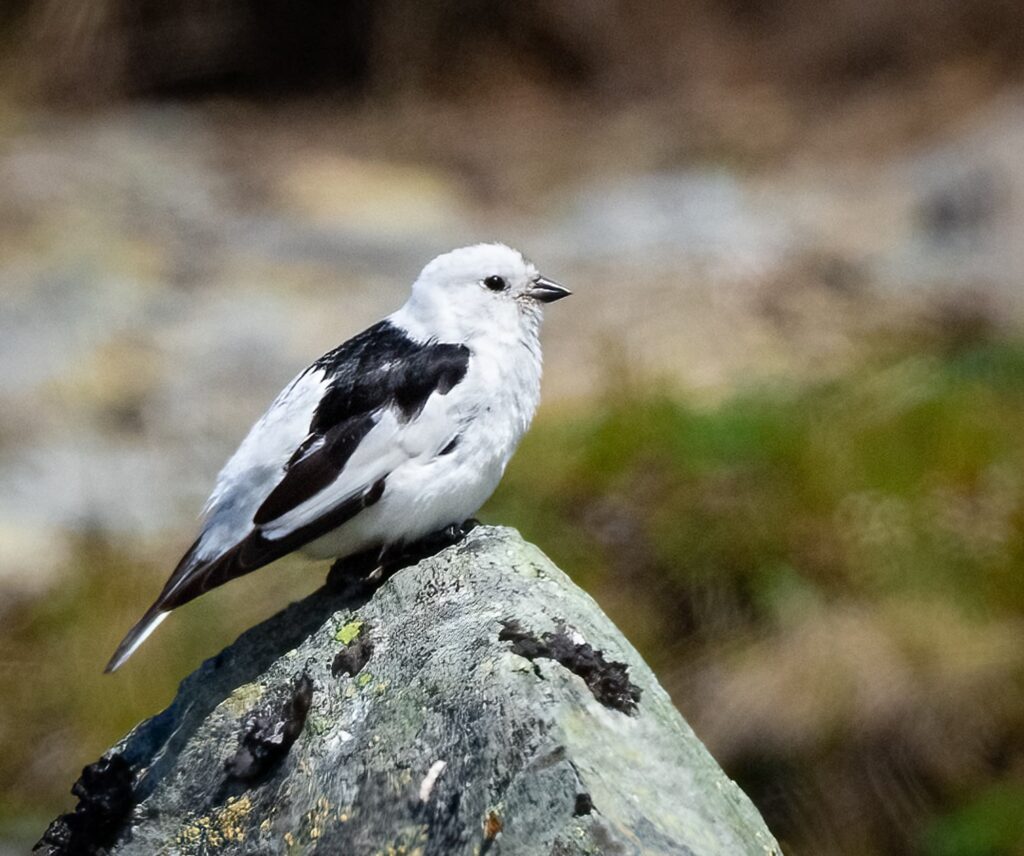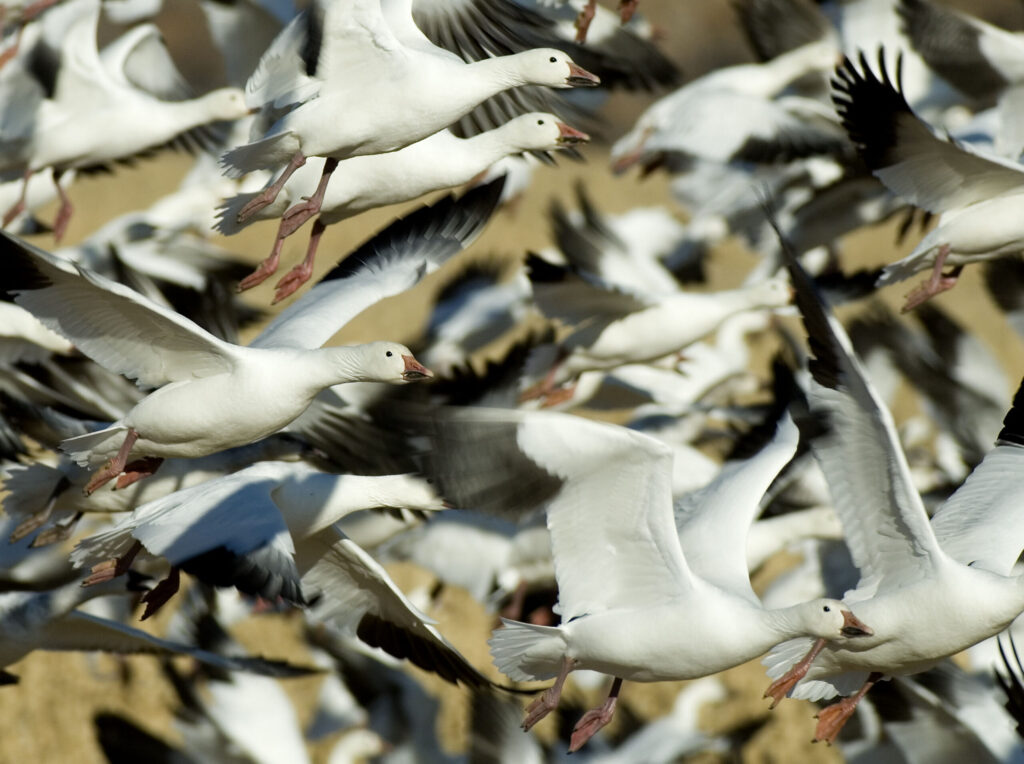
Winter is a challenging season for birds, but some species have evolved fascinating adaptations to cope with the harsh conditions, most notably with their plumage. Species have either evolved to change into entirely new outfits or have simply developed a remarkably effective plumage that mimics the snow-white landscape.
Willow Ptarmigan – A Master of Disguise
Found in the Arctic and subarctic regions including parts of Canada, like this one Owen photographed in Manitoba during a trip there in 2004, willow ptarmigans undergo one of the most drastic winter plumage changes. During the summer, they sport brown and mottled plumage that helps them blend in with the tundra vegetation. As winter arrives and the snows fall, this brown plumage makes them a perfect target as predators would easily spot them against the white landscape, so these birds have evolved to continue hiding in plain sight – they undergo a full molt where every feather is replaced with a pure white one, except for a few black feathers in the tail. Fossil remains tell us that this adaptation has remained unchanged since the Pleistocene began some 2.58 million years ago. They have also evolved to develop large pectoral muscles giving them that plump, rounded look – these aid in the shivering process, another way to keep warm during the long winter days and nights.

Snow Bunting – Winter Elegance
Snow buntings are small birds that breed in the Arctic, making this the most northerly recorded passerine in the world and the first migrants to arrive to these icy territories. The male’s breeding plumage consists of boldly defined black and white sections as can be seen here, but when they migrate to lower latitudes during the winter, they undergo a change much like the willow ptarmigan, except in reverse: they develop a mix of rufous brown streaks, similar to the females’ breeding plumage. Again, this magnificent transformation helps the birds blend in with the open fields and sedge meadows they overwinter in from September onwards until the pull of the geomagnetic north guides them back to their breeding grounds once April comes around again. Snow buntings mostly migrate at night, using the stars and the magnetic orientation of the globe, as consistent landmarks that other species use for navigation are nowhere to be seen in the icy wastelands of the Arctic.

Snow Goose – When White Can Be Blue
Named after their usually white plumage, snow geese actually have two morphs, a light and less common darker one, with this latter one referred to as blue goose. White morphs have all-white plumage except for their black wingtips, and blue morphs have bluish-gray plumage replacing the white except on the head, neck and tail tip. As these birds breed in the snow-covered tundra of Canada, Greenland, Alaska and Siberia, chicks are well-developed before they hatch, emerging from their shells with open eyes and covered in thick down that already shows which morph their plumage will take. Within three weeks, they can walk over 50 miles if necessary, and can outrun many predators whilst going through their first molts. These large migratory waterfowl provide a stunning display when they form huge flocks, sometimes as many as 500,00 individuals, as they head off on their biannual journeys, flying at high altitudes over 3,000 miles between their breeding grounds and the warmer parts of North America for winter, honking loudly as they fly through the thin air.

Climate Change Challenges
Warmer winters and unpredictable weather patterns pose a significant threat to these finely tuned adaptations. Any mismatch between plumage change and snow cover increases vulnerability to predators on an often-catastrophic scale, as well as affecting the availability of food resources. Recent studies have shown that warmer springs trigger an early breeding behavior in snow buntings that mismatches the peak of their food sources, leading to a lower success rate of the hatchlings. Higher temperatures will also bring wetland species to the Arctic as the snows melt, leading to competition for both food and territory.
However, despite the challenges, there is currently a glimmer of hope. The incredible adaptability of birds has already shown that, like many species across the world, snow buntings are taking advantage of longer warmer periods and attempting three or even four broods per season to counteract the shifting food availability. Additionally, as more of us understand and appreciate the intricate relationships between birds and their impressive winter plumage adaptations, we can work towards a more sustainable future and join those conservation efforts to ultimately protect crucial habitats as we continue to address the root causes of climate change.


